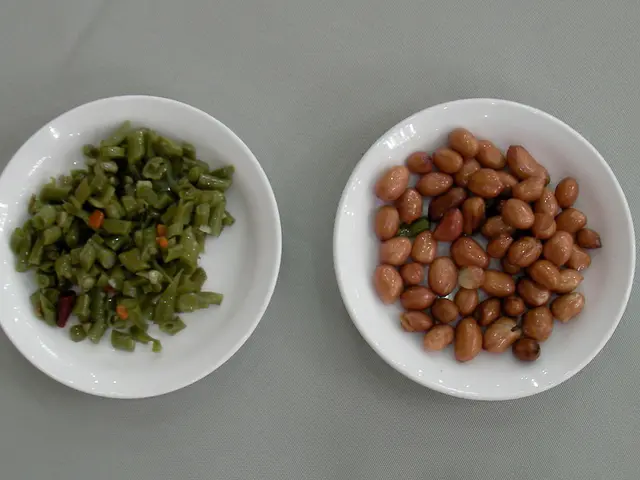Diabetes Varieties Explored: Delineating MODY from Other Diabetes Types
In the world of diabetes, Maturity Onset Diabetes of the Young (MODY) stands out as a distinct and less common form of the disease. Characterized by several genetic subtypes, each with unique symptoms and treatments, MODY affects children, adolescents, and young adults, and can often be traced through families.
MODY includes several genetic subtypes, each with a specific gene mutation at its core. The most common subtypes are MODY 1, caused by a mutation in the HNF4A gene, and MODY 3, linked to a mutation in the HNF1A gene. Both these subtypes are characterized by early-onset, non-insulin-dependent hyperglycemia, with preserved insulin sensitivity but impaired glucose-stimulated insulin secretion. Symptoms often include mild to moderate hyperglycemia before age 25, without obesity or ketoacidosis, and a positive family history of diabetes. These subtypes typically respond dramatically to low-dose sulfonylureas, allowing many patients to stop insulin therapy if it was used initially.
MODY 2, caused by a mutation in the GCK gene, usually presents as mild, stable fasting hyperglycemia that often does not progress or cause symptoms. This form may not require medication and can often be managed with diet and lifestyle alone.
Other MODY subtypes, up to MODY 13, have variable clinical presentations but often involve dysregulated insulin secretion due to different gene mutations affecting pancreatic beta-cell function or development.
Additional treatments under investigation for several MODY subtypes include GLP-1 receptor agonists, such as dulaglutide and semaglutide, which have shown therapeutic potential in improving glycemic control.
For a definitive diagnosis, clinicians rely on a combination of clinical features, family history, absence of autoimmunity, and genetic testing when available. Misdiagnosis as type 1 or type 2 diabetes is common due to overlapping features, leading to unnecessary insulin use in some cases.
In summary, MODY subtypes differ in severity and treatment, with sulfonylureas preferred for HNF1A and HNF4A mutations, and diet management often sufficient for GCK-related MODY. Emerging therapies like GLP-1 receptor agonists show promise but are not yet standard.
MODY typically follows an autosomal dominant inheritance pattern, with a first-degree family history being common. If a person suspects they or their child has MODY, it is advisable to consult a healthcare professional and consider genetic testing.
While MODY may account for roughly 5% of all diabetes cases in the United States, it is still a relatively rare condition, with an estimated prevalence of 1 in 50,000 children. It's important to remember that MODY is different from type 1 and type 2 diabetes, as it is a monogenic condition and occurs due to a change in a single gene.
Individuals with MODY often have a moderate, healthy weight and may experience mild diabetes symptoms that develop gradually. These can include frequent urination, increased thirst, dehydration, blurry vision, and recurring skin and yeast infections.
MODY can be caused by inheriting the genetic change from a parent or by new changes in a gene. C-peptide levels are normal in MODY, and beta cell antibodies are negative. The first-line treatment for MODY is sulfonylurea, and treatment often involves diet or medication and does not necessarily require insulin.
References:
- Raskin P, et al. Molecular Genetic Testing in Diabetes Care: A Position Statement of the American Diabetes Association. Diabetes Care. 2017;40(12):2237-2245.
- Rodeghiero F, et al. European Guidelines on the Diagnosis and Treatment of Neonatal Diabetes Mellitus. Pediatric Diabetes. 2018;19(2):101-112.
- Melander A, et al. The prevalence of MODY in Sweden—a nationwide study. Diabetologia. 2017;60(1):39-47.
- Wägner J, et al. GLP-1 receptor agonists in the treatment of maturity onset diabetes of the young (MODY). Endocrine. 2018;58(4):565-572.
- Melander A, et al. Maturity-Onset Diabetes of the Young: Current Knowledge and Clinical Management. Diabetes Care. 2018;41(12):2605-2616.
- In the sphere of endomorphic disorders, Maturity Onset Diabetes of the Young (MODY) is an unusual and less frequent form of chronic diseases, such as diabetes, characterized by several genetic subtypes.
- These subtypes, including MODY 1, MODY 2, MODY 3, and more, up to MODY 13, are associated with various gene mutations, causing dysregulated insulin secretion and affecting pancreatic beta-cell function or development.
- MODY subtypes like those caused by HNF1A and HNF4A mutations often need low-dose sulfonylureas for treatment, while GCK-related MODY may be manageable through diet and lifestyle modifications only.
- In cases of suspected MODY, mental health professionals and healthcare specialists should be consulted, considering genetic testing when available, as early diagnosis is crucial for effective health and wellness management.
- Despite being a rare condition, with an estimated prevalence of 1 in 50,000 children, understanding nutrition, fitness and exercise, and maintaining mental health are crucial for individuals with MODY, as a healthy lifestyle can help manage symptoms like frequent urination and increased thirst.







